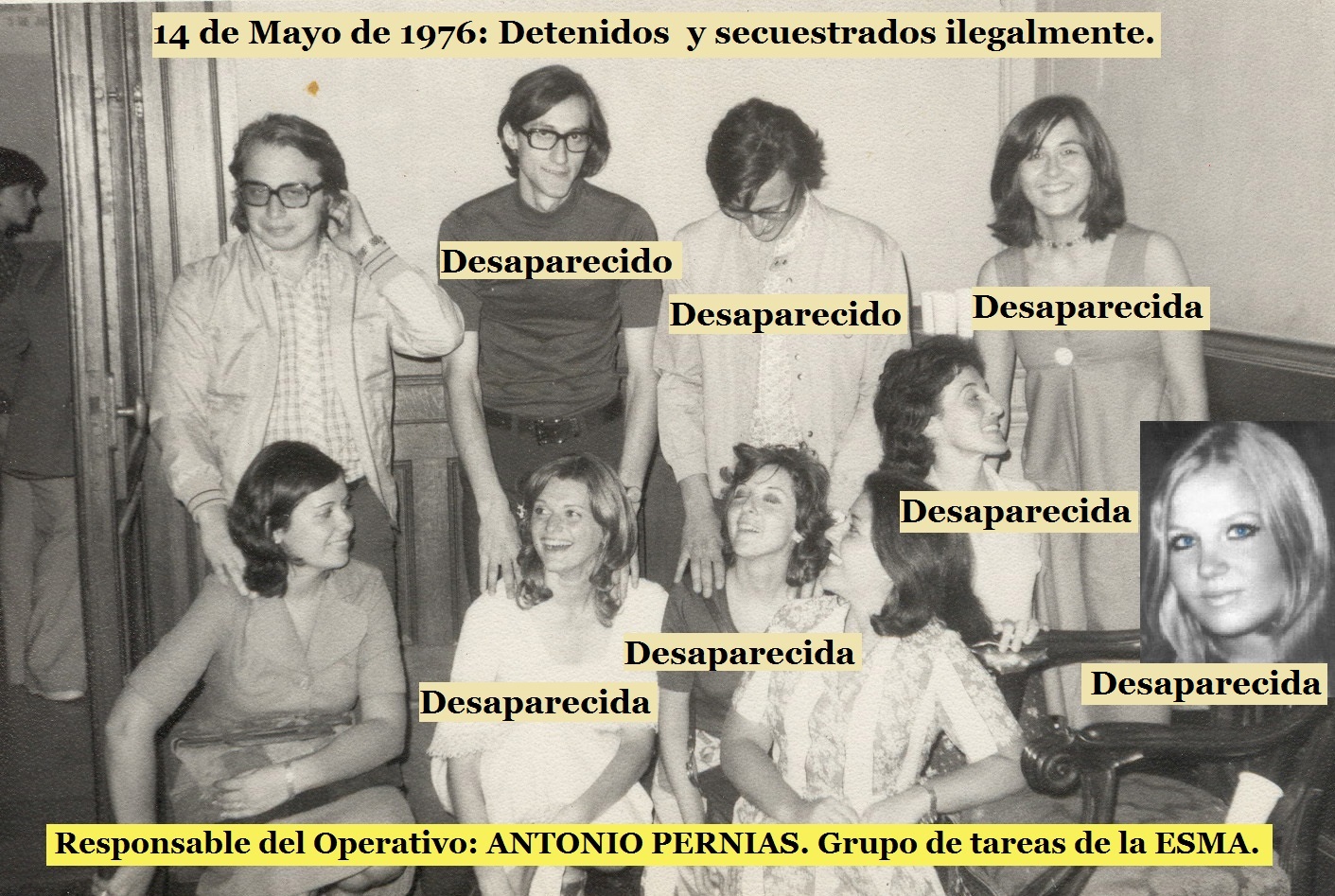
Today CELS finished delivering its closing argument on behalf of the unified legal team representing plaintiffs, in the third trial for the crimes against humanity committed against 789 people in the clandestine detention and torture center run out of the Navy School of Mechanics (ESMA). Life-imprisonment sentences were requested for 51 defendants and 10 to 25 years for four others.
The unified ESMA case made it possible to unravel the Navy’s repressive structure and the different stages of the criminal repression that took place at ESMA from 1976 until the end of the dictatorship. In the trial against 55 defendants heard before the Federal Criminal Court No. 5, solid evidence was presented thanks to the analysis of testimonies heard in oral arguments and the work done on files belonging to the security and Armed Forces, which were analyzed by survey teams at the Ministries of Defense and Security and by the Foreign Ministry’s Historical Memory Commission.
Throughout the trial hearings, the investigation focused on the stage in which allegations regarding human rights violations in the Argentina made abroad became increasingly relevant. At that time, the dictatorship undertook an intervention strategy known as the “anti-Argentina campaign” through actions triangulated between the ESMA, the Navy in partnership with the Foreign Ministry, and the Pilot Center of the Argentine Navy, based in Paris, which made it possible to organize the persecution of political opponents outside the country. This trial reconstructed the structure and dynamic of the flights of death and delved deeper into the operation of ESMA as a clandestine maternity ward.
Some media outlets played a complacent role in the civil-military dictatorship, others were ideologically aligned with it. For example, while there were complaints that made it possible to know or, at least, suspect that disappeared individuals were kept in the ESMA, where they were tortured and murdered, media broadcasted the “official” version, claiming that the deaths were the result of clashes. The role of the Catholic Church was also exposed in this trial, for example, the use of “El Silencio” island (Spanish for the silence) when the task group 3.3 used the island to hide ESMA detained-disappeared individuals during the 1979 visit of the Inter-American Commission on Human Rights. The island was owned by the Archbishop of Buenos Aires.
The facts that this trial threw light on reinforce the articulation between justice and truth: today we know much more about the functioning of the ESMA as a clandestine detention and torture center. Reparation of the victims and society is only possible if the State complies with its obligations to investigate, punish and reconstruct history.
Among the cases that CELS represents are the kidnappings and disappearances of the Villa del Bajos Flores, a group Monica Mignone was part of. We represent the families of Ariel Ferrari, Alcira Fidalgo, Sergio, Hugo and Betina Tarnopolsky, Blanca Edelberg, Laura del Duca, Pablo Lepiscopo and Fernando Brodsky, Graciela García, Marta Álvarez and we act as a human rights organization.
In addition, as part of the unified legal team representing plaintiffs, we act in representation of the Madres de Plaza de Mayo-Línea Fundadora, of Abuelas de Plaza de Mayo, of Isabel Teresa Cerrutti, Marina Girondo, Victoria Grigera Dupuy and Ramón Camilo Juárez (members of H.I.J.O.S.) and of the plaintiffs sponsored by lawyers Alcira Ríos and Pablo Llonto.
Background
This clandestine detention center was the subject of two previous trials. The first was held in December 2007, with a single defendant: Héctor Febrés. His death days before the reading of the sentencing meant the trial could not continue.
The second trial began in late 2009. It involved 86 cases whose investigation had been suspended by the Full Stop Law and the Law of Due Obedience in 1986 and 1987, respectively. On that occasion, Case No. 1270 focused on the repressive period of a task force led by Jorge Eduardo Acosta until 1979. the trial resulted in 16 convictions and two acquittals.
Prison terms requested
We ask that the following individuals be sentenced to life in prison: Jorge Eduardo Acosta, Ricardo Miguel Cavallo, Alfredo I. Astiz, Carlos Guillermo Suárez Mason, Gonzalo Torres de Tolosa, Jorge Carlos Rádice, Adolfo Miguel Donda, Carlos Octavio Capdevila, Ricardo Jorge Lynch Jones, Antonio Pernías, Rogelio José Martínez Pizarro, Enrique De Saint Georges, Eduardo Aroldo Otero, Juan Antonio Azic, Juan Carlos Fotea, Ernesto F. Weber, Claudio Orlando Pittana, Orlando González, Jorge Manuel Díaz Smith, Rubén Ricardo Ormello, Paulino Oscar Altamira, Juan de Dios Daer, Daniel Néstor Cuomo, Daniel Humberto Baucero, Héctor Francisco Polchi, Antonio Rosario Pereyra, Francisco Lucio Rioja, Jorge Luis Magnacco, Víctor Roberto Olivera, Eugenio Vilardo, Hugo Enrique Damario, Alberto E. González, Juan Carlos Rolón, Pablo E. García Velasco, Néstor O. Savio, Randolfo Agusti Scacchi, Juan Arturo Alomar, Rodolfo Cionchi, Carlos Eduardo Daviou, Miguel Ángel García Velasco, Guillermo Pazos, Miguel Ángel Alberto Rodríguez, Hugo Sifredi, Emir Sisul Hess, Francisco Di Paola, Luis Ambrosio Navarro, Rubén Oscar Franco, Alejandro Domingo D´Agostino, Mario Daniel Arru, Miguel Enrique Clements and Julio Alberto Poch.
We ask that Juan Alemann be sentenced to 10 years in prison and Roque Ángel Martello to 15 years. For Mario Pablo Palet and Julio César Binotti, we ask that they be sentenced to 25 years each.
